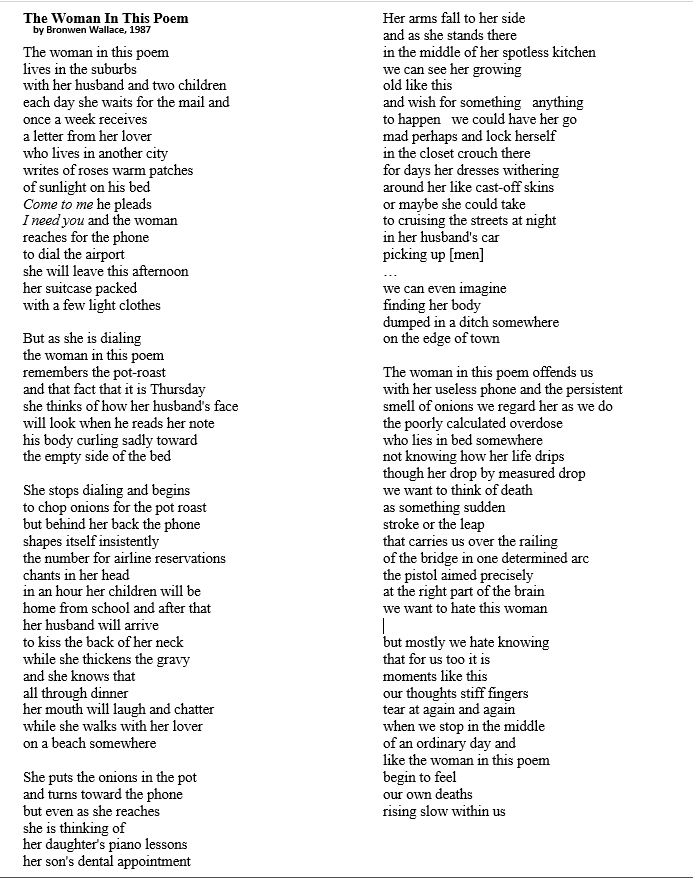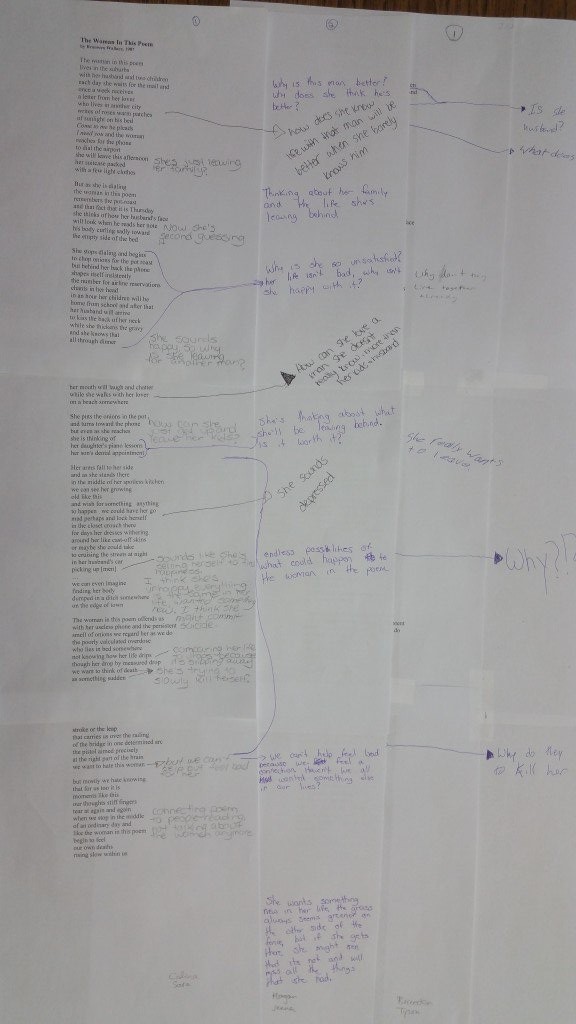Ap 29/16 Station D: What did you think of “The Woman in This Poem”?
There is a lot of variety in the types of poems written, differing by their format, attitude they approach a common topic with, word choice, etc.
The following poem will likely be a poem unlike any you’ve read so far in school ELA classes. It’s another sample of what poetry can be like.
Task- Either alone or with a partner you will:
- read through the poem
- add comments/questions/insights on the Right-Hand side of the poem. Underline or circle the part of the poem that triggers your comment and draw a line from it to your comment on the right.
- As others rotate through to this Station Activity, they will read the poem, read your comments left on the right, and then add their own comments/questions/insights either directly to the poem or to the comments left by the ones before.
- There will be additional slips of paper added to the right for these additional readings/annotations of the poem. (See image)
- What kinds of things can you comment on?
- if you can visualize what’s described in the poem, mention it and explain what you see
- if reading a phrase reminds you of something from another story, your own experience, something you’ve heard, write down that connection
- if there’s a phrase that infers/hints at something and you recognize it, identify and explain it
- if you’re surprised by something, write down what triggered your response and how why
- if you like a certain pairing of words together, using plays on sounds of words like Alliteration, Consonance, Assonance, Repetition, or Rhyme, identify and explain what you like about it
- if you have questions for the author – why did they word it this way, what are they hinting at here, is there a phrase missing at the end of this line, etc write them out
- if you develop predictions of how things will end, explain what you anticipate and why
- When you’re done, before moving to the next station:
- Individually (each in the partner group) needs to add a comment to this post to share what you thought overall of the poem you studied. Try to develop at least a 3 sentence response.
Below is an example of what it may look like as groups rotate through this station.




 tner. If you’re not able to finish within a certain amount of time, you’ll be able to complete from home as well.
tner. If you’re not able to finish within a certain amount of time, you’ll be able to complete from home as well.
 understand 450 year old literature isn’t as important as being able to understand the plot elements and deeper concepts within the story itself.
understand 450 year old literature isn’t as important as being able to understand the plot elements and deeper concepts within the story itself.

